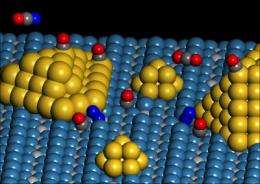Performance of Nano Material in Different Industries (PhD in Nano _ Microelectronics)
Researcher and author: Dr. ( Afshin Rashid)
Note: In general, nanomaterials can be defined as materials that have at least one external dimension with a size of 1-100 nanometers.
Definition of nanomaterials Nano Material can be the case that at least half the size of the particles in the number size distribution should be 100 nm or less. Nanomaterials can occur naturally, be generated as by-products of combustion reactions, or be purposefully engineered to perform a specific function. These materials can have different physical and chemical properties than their bulk or natural samples.
In nanoscience, the structure of materials determines the relationship between the atoms, ions, and molecules that make up those materials. To understand the structure of materials, one must first understand the type of bonds between atoms and ions . Chemical bonds determine how bonds between atoms and ions are made. Therefore, differences in the type of connections can be seen in the characteristics of these links. For example, in NaCl, due to the presence of an ion bond that leads to the entrapment of electrons, ( conductivity) is not observed, because the electrons that carry and transfer the electric charge, can not move due to entrapment and have nothing to transfer There will be no electric charge in the material. In contrast in metals, such as copper, due to the presence of metal bonds that cause Electrons are released and allow electrons to move, conductivity can be expected. Because free electrons allow the transfer of electrical charge throughout matter. Knowing the type of atomic bonds can help to understand the behavior and properties of materials. Regarding microstructures in nanoscience, it may be thought that the materials seen as a mass around them originated from the expansion of the early structural order. In other words , it may be assumed that bulk material is an extended form of the original structure and therefore will have all the properties and behavior of the original structure . This perception is different from behavioral observations of materials.
Conclusion :
In general, nanomaterials can be defined as materials that have at least one external dimension with a size of 1-100 nanometers.
Researcher and author: Dr. ( Afshin Rashid)
PhD in Nano-Microelectronics




